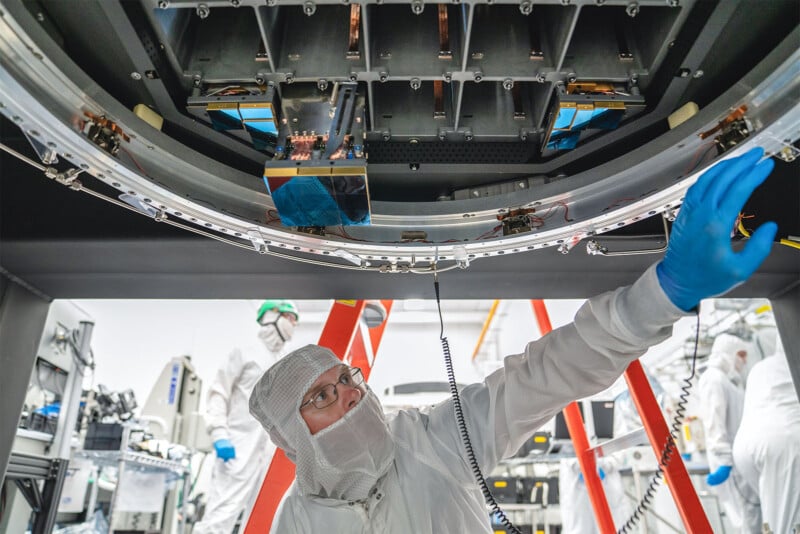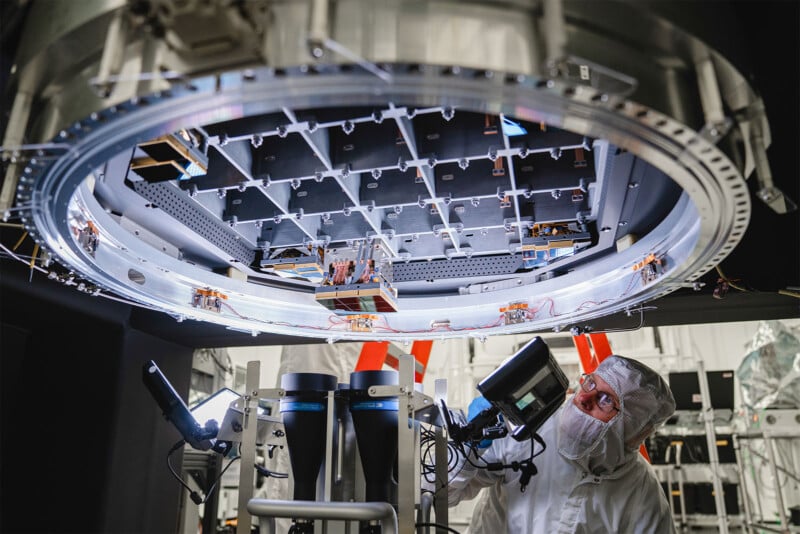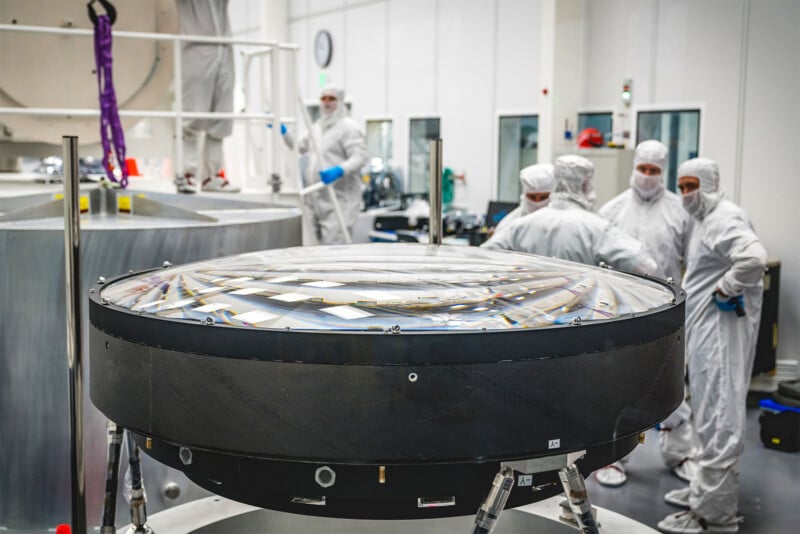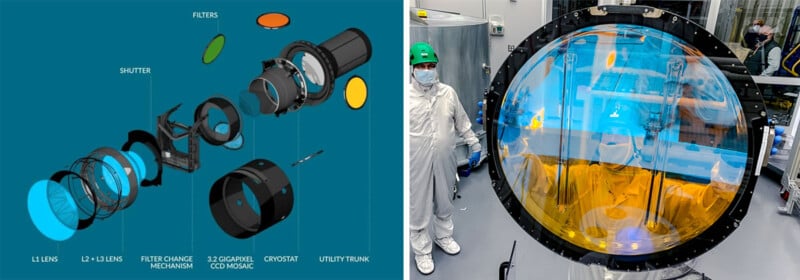The Biggest Digital Camera Ever Is Ready to Solve Cosmic Mysteries 3,200 Megapixels At a Time
![]()
After more than two decades and a few delays, the Legacy Survey of Space and Time (LSST) Camera is finally built and ready to be sent to the Rubin Observatory in Chile, where it will capture 3,200-megapixel photos of deep space and help scientists unravel the mysteries of the Universe.
The LSST has been tirelessly and meticulously built at the Department of Energy’s (DOE) SLAC National Accelerator Laboratory at Stanford University in California. The total construction cost is expected to be near $700 million, and given the camera’s sensor and optical design, perhaps it is no surprise.

“Sensor” is perhaps a bit misleading, as the LSST Camera, the largest digital camera ever constructed, relies upon a precise mosaic of 201 custom-designed CCD image sensors arranged across 21 “rafts. Combined, these rafts deliver a total resolution of about 3.2 gigapixels, or about 53 Sony a7R V full-frame cameras. The combined sensors are so flat that the surface varies by no more than a tenth the width of a typical human hair.

Farrin Abbott / SLAC National Accelerator Laboratory

The flat focal plane is not quite rectangular but rather generally circular. Its diameter is 25.2 inches (64 centimeters). Between the image sensor and the lens is a large shutter and a filter-changing mechanism.
While a filter-changing mechanism may not seem vital to terrestrial photographers, for astrophotography, it is crucial. Different materials are visible across various wavelengths, so capturing the same swath of the night sky at different electromagnetic frequencies is essential to understanding what is happening in the cosmos. LSST’s filter-changing mechanism is especially impressive, as it can capture images and change filters in less than 90 seconds — quite the feat for a massive camera.

![]()
The telescope will be paired with a 27.6-foot (8.4-meter) primary mirror, weighing 39,000 pounds (16,284 kilograms), and an 11-foot (3.4-meter) secondary mirror. In total, the telescope, including the camera, weighs 62 tons, or 56,250 kilograms.
Its lenses are also groundbreaking. The optical assembly includes three lenses, the largest of which is 1.57 meters (5.1 feet) in diameter, making it the world’s largest high-performance optical lens ever.
“The Lawrence Livermore National Laboratory is extremely proud to have had the opportunity to design and oversee the fabrication of the large lenses and optical filters for the LSST Camera, including the largest lens in the world,” says Vincent Riot, a LLNL engineer and the former LSST Camera project manager. “LLNL was able to leverage its expertise in large optics, built over decades of developing the world’s largest laser systems, and is excited to see this unprecedented instrument completed and ready to make its journey to the Rubin Observatory.”

“With the completion of the unique LSST Camera at SLAC and its imminent integration with the rest of Rubin Observatory systems in Chile, we will soon start producing the greatest movie of all time and the most informative map of the night sky ever assembled,” says Director of Rubin Observatory Construction and University of Washington professor Željko Ivezić.
The camera’s resolving power is hard to imagine. To put it into perspective, “Its images are so detailed that it could resolve a golf ball from around 15 miles away, while covering a swath of the sky seven times wider than the full moon. These images with billions of stars and galaxies will help unlock the secrets of the Universe,” Aaron Roodman, SLAC professor and Rubin Observatory Deputy Director and Camera Program Lead explains.
![]()
With such resolving power and a massive primary mirror to gather light, the LSST will peer deep into the cosmos from its future home perched at nearly 9,000 feet of elevation in Chile. Scientists hope to understand dark energy and its role in Universal expansion. Astronomers also want to learn more about how galaxies are distributed and how they have changed over time, which may play a key role in understanding dark matter and energy.
![]()
The LSST will also look at objects much closer to home. Many stars in the Milky Way galaxy are very small, faint, and hard to see. But the LSST Camera is sensitive enough to detect them, and it may increase the number of known objects in Earth’s cosmic neighborhood by a factor of 10—which is significant. The LSST Camera will be instrumental in creating the most accurate, detailed map of the Milky Way ever.
The LSST Camera will soon be headed from California to Chile, where it will then undergo final assembly and calibration. The aim is to put the first cosmic light through the telescope early next year.
Image credits: Rubin Observatory, Department of Energy, and the SLAC National Accelerator Laboratory